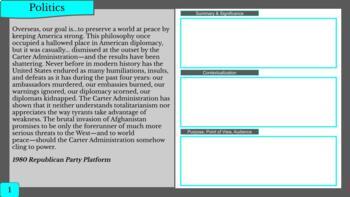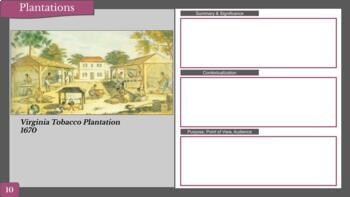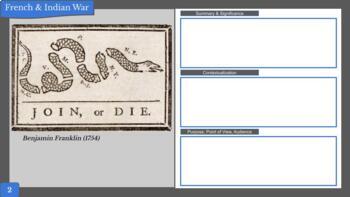BUNDLE | APUSH Document Analysis | Full Year: Periods 1-9 | REVIEW | Bellringers
- Google Slides™

What educators are saying
Products in this Bundle (9)
showing 1-5 of 9 products
Description
APUSH document analysis helps AP United States History analyze primary and secondary sources covering periods one through nine. Document analysis is critical for success on multiple choice, SAQ and DBQ. This is a no prep digital resource great for bell ringer, review, and group work. Historical thinking skills throughout!
Students will:
- Analyze sourcing and situation of primary and secondary sources.
- Identify a source’s point of view, purpose, historical situation, and/or audience.
- Explain the point of view, purpose, historical situation, and/ or audience of a source.
- Explain the significance of a source’s point of view, purpose, historical situation, and/or audience, including how these might limit the use(s) of a source.
You know incorporating primary and secondary sources into your teaching is a must, but how do you do it under such pacing pressures? Are you wondering how to use documents to enhance your teaching?
This document analysis activity provides the answers to so many of your struggles! This resource is perfect for bellringer warm-ups, review, or to dive a bit deeper into the topic of the unit. APUSH teachers know, and students will soon discover that the ability to analyze documents is a MUST to succeed on the AP exam. This skill pops up in EVERY multiple choice question, SAQs, and DBQs. Providing an opportunity for your students to get their eyes on the primary source documents and their authors will give them the confidence to crush their exam in the Spring!
Is this a group or individual activity?
- Although I typically assign this resource as a bell ringer to review or introduce material at the beginning of each lesson, this can be done individually or with a small group. The discussion in small groups is evidence that historical thinking is taking place!
How do you assign this?
- I assign this through Google Classroom.
When do you do this activity?
- This resource best serves as a bellringer, but can be used in other situations. Assigning a specific document to a small group to present to class is a great way to introduce each of these documents and their authors to the class. Using as a review activity at the end of a unit or before the AP exam is also a great idea.
I have a PASSION for helping fellow educators. Please follow by clicking the link below to help support me in this cause. https://www.teacherspayteachers.com/Sellers-Im-Following/Add/Edg-Resources





